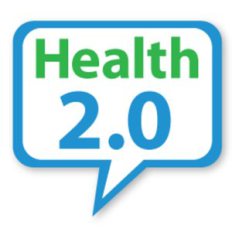 As a pediatric cardiac intensivist, I start each morning by doing my rounds in the cardiovascular intensive care unit (CVICU) at the Children’s of Alabama in Birmingham. It doesn’t sound out of the norm, except every other week I’m handling it from 500 miles away at my home office in St. Louis, Missouri from an app on my phone. While I spend the other weeks in Birmingham on-site at the hospital, technology has given me the flexibility to live remotely while still ensuring the highest level of care for my patients.
As a pediatric cardiac intensivist, I start each morning by doing my rounds in the cardiovascular intensive care unit (CVICU) at the Children’s of Alabama in Birmingham. It doesn’t sound out of the norm, except every other week I’m handling it from 500 miles away at my home office in St. Louis, Missouri from an app on my phone. While I spend the other weeks in Birmingham on-site at the hospital, technology has given me the flexibility to live remotely while still ensuring the highest level of care for my patients.
Tag Archives: cardiology
Progressing and Engaging to Improve Patient Care
 Making quick decisions is important when it comes to cardiology patients – particularly when patient conditions unexpectedly change in the ER or overnight when access to a cardiologist is more limited. Since quality care does not end when the physician leaves the bedside, having the latest and most relevant data easily accessible no matter where the cardiologist is can be critical.
Making quick decisions is important when it comes to cardiology patients – particularly when patient conditions unexpectedly change in the ER or overnight when access to a cardiologist is more limited. Since quality care does not end when the physician leaves the bedside, having the latest and most relevant data easily accessible no matter where the cardiologist is can be critical.
In recent years, cardiologists have relied on faxed or texted pictures of an ECG to help them make decisions, or even other staff members’ verbal descriptions of what they see on the readout. But the quality of this information is inadequate. By the time a fax is sent, it’s outdated. Zooming capabilities for texted images can only do so much. And – though we credit all of our staff for their knowledge – cardiology is a specialty and these doctors may see something on an ECG that might be missed in a verbal update.
Putting Patients at the Heart of the Cardiology Service Line
 Mobility is essential to cardiac physicians. They don’t sit behind a desk all day, but rather are moving back and forth between their clinic, their office and around the hospital. Mobile health products allow cardiac physicians to maintain their access to critical clinical data even while in motion. Accessing data on a handheld device regardless of location is transformational, as it means the cardiac physician doesn’t need to be at the patient bedside to make a timely care decision.
Mobility is essential to cardiac physicians. They don’t sit behind a desk all day, but rather are moving back and forth between their clinic, their office and around the hospital. Mobile health products allow cardiac physicians to maintain their access to critical clinical data even while in motion. Accessing data on a handheld device regardless of location is transformational, as it means the cardiac physician doesn’t need to be at the patient bedside to make a timely care decision.
However, mobility in the cardiology service line isn’t ultimately about cardiac physicians – it’s about the patient. When we think about the cardiology service line, we don’t think about the cardiology specialty – we think about a patient with a heart condition. But it’s also important that we look beyond the heart to view our patients comprehensively. Does the patient have any other conditions? What medications are we prescribing?
The Partner Approach to Implementing Change
 Technology is created and designed to make life simpler. For physicians, mobile technology offers the ability to review data more immediately and conveniently. It also helps provide the patient with better, more holistic care. All sounds great, right?
Technology is created and designed to make life simpler. For physicians, mobile technology offers the ability to review data more immediately and conveniently. It also helps provide the patient with better, more holistic care. All sounds great, right?
Almost.
Implementing any change in an organization is tricky. It requires effort from all parties involved to transform the “new thing” into “the norm.” Physicians need to see the value of the solution and be encouraged to use it regularly. The vendor needs to tweak its solutions to meet the needs and expectations of the customer. And the customer needs to adopt new workflows to support the technology. It’s a cycle of trust, encouragement and adjustment.
Microsoft Takes the Stage at Health 2.0
 The healthcare industry is rapidly evolving; at the same time the cost of many smartphones and tablets is poised to dramatically decrease. Case in point: the purchase of Nokia by Microsoft with a plan to develop very powerful and inexpensive devices. In the next 12 to 18 months, we’re going to see a huge increase in tablet and smartphone utilization because of price reductions.
The healthcare industry is rapidly evolving; at the same time the cost of many smartphones and tablets is poised to dramatically decrease. Case in point: the purchase of Nokia by Microsoft with a plan to develop very powerful and inexpensive devices. In the next 12 to 18 months, we’re going to see a huge increase in tablet and smartphone utilization because of price reductions.
The changes in the mobile technology market are going to span industries, including healthcare. The industry is increasingly mobile, and getting the data to physicians anytime, anywhere is critical. The commoditization of the smartphone and tablet market means that hospitals and health systems have lower cost options to provide hospitalists – who account for a large portion of the physician staff and hospital admissions – with the devices they need to provide care across the continuum. In addition, the “bring your own device” trend is here to stay, especially as the cost of tablets and smartphones declines.
Partnering for the Future of Healthcare
 For hospitals and health systems to achieve the value of their EMR investments, they must be able to deliver information to the point of care and ultimately the point of making a difference with patients – whether the clinician is at the bedside, down the hall, in the office or at home. Industry paradigms like health system consolidation and the physicians shortage mean that clinicians will be increasingly mobile, relying on personal devices for the information they need to provide quality care.
For hospitals and health systems to achieve the value of their EMR investments, they must be able to deliver information to the point of care and ultimately the point of making a difference with patients – whether the clinician is at the bedside, down the hall, in the office or at home. Industry paradigms like health system consolidation and the physicians shortage mean that clinicians will be increasingly mobile, relying on personal devices for the information they need to provide quality care.
What we know today is getting information into the hands of clinicians in the right place at the right time isn’t going to be easy. That’s why in July, Microsoft was pleased to announce that AirStrip will be the first mHealth company to be part of the Microsoft Apps For Surface program. Innovative leadership like AirStrip’s is essential to overcoming the challenges of mobile healthcare such as like compliance, regulations and interoperability.
The Promise of Mobility: A Cardiac Surgeon’s Perspective
 When I talk to fellow clinicians at Sequoia Hospital who are now using mobility to monitor labor and delivery patients, or view ECGs in near real-time, the reactions are uniformly positive. They praise the ability to make faster, informed assessments based on the information they access on their smartphones or tablets and the workflow improvements.
When I talk to fellow clinicians at Sequoia Hospital who are now using mobility to monitor labor and delivery patients, or view ECGs in near real-time, the reactions are uniformly positive. They praise the ability to make faster, informed assessments based on the information they access on their smartphones or tablets and the workflow improvements.
However, from a surgeon’s point of view, the most exciting developments are just starting to happen. Incorporating mobility throughout the cardiac care continuum and providing constant monitoring of patients anytime or anywhere is the real game-changer. Because we are most interested in the total care of the patient, continuity is crucial – and mobility enables this in ways that were never possible before.
CMOs: 3 Ways to Look Before Taking the mHealth Plunge
 At Vanguard Health Systems, our vision for mobility is focused on streamlining and optimizing workflow, consistently advancing best practices and ultimately achieving measurable outcomes improvement across the full care continuum.
At Vanguard Health Systems, our vision for mobility is focused on streamlining and optimizing workflow, consistently advancing best practices and ultimately achieving measurable outcomes improvement across the full care continuum.
We first dipped our toes into the mHealth waters some seven years ago by implementing mobile patient monitoring in labor and delivery in one of our markets. mHealth enabled safer, more effective maternal-fetal care and was well-received by our physicians. In a number of cases, obstetricians are using mobile devices to intervene successfully in a patient’s care from remote locations.
The Heart of Mobility – Where Minutes Matter Most
 Montefiore Medical Center is a pioneer when it comes to adopting technologies that enhance the quality of care. We were among the first healthcare systems to adopt electronic medical records (EMRs) and computerized physician order entry (CPOE) in the early ‘90s. As an integrated healthcare delivery network operating from the Bronx, New York, Montefiore’s services span four campuses and more than 130 delivery locations. This means our physicians travel across sites and require access to information while working remotely. Today, as we continue to stay ahead of the technology curve, the natural next step is to adopt mobility solutions, including in our mission-critical cardiology services.
Montefiore Medical Center is a pioneer when it comes to adopting technologies that enhance the quality of care. We were among the first healthcare systems to adopt electronic medical records (EMRs) and computerized physician order entry (CPOE) in the early ‘90s. As an integrated healthcare delivery network operating from the Bronx, New York, Montefiore’s services span four campuses and more than 130 delivery locations. This means our physicians travel across sites and require access to information while working remotely. Today, as we continue to stay ahead of the technology curve, the natural next step is to adopt mobility solutions, including in our mission-critical cardiology services.
Taking the Pulse of Cardiovascular Services
 Mobility is making an impact on cardiovascular services - ranging from expedited STEMI care pathways to readmission reductions for congestive heart failure (CHF) and intermittent dysrhythmias. Taking a step back to reflect on the state of the cardiovascular service line at large illustrates some key pressures that health systems are experiencing and why mobile technology solutions are taking off in this area. Continue reading
Mobility is making an impact on cardiovascular services - ranging from expedited STEMI care pathways to readmission reductions for congestive heart failure (CHF) and intermittent dysrhythmias. Taking a step back to reflect on the state of the cardiovascular service line at large illustrates some key pressures that health systems are experiencing and why mobile technology solutions are taking off in this area. Continue reading
